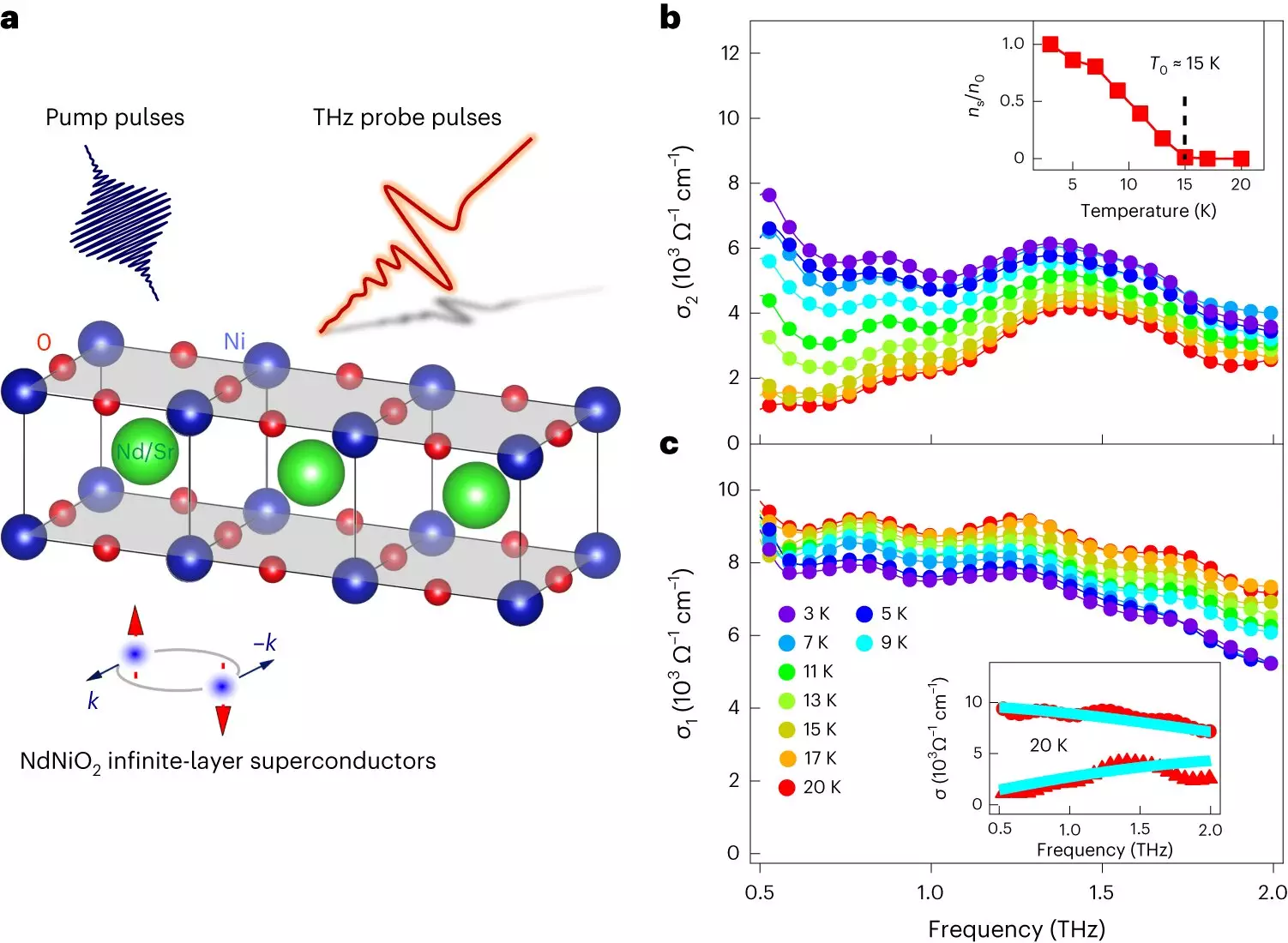In a groundbreaking study, a team of scientists from the U.S. Department of Energy’s Ames National Laboratory and SLAC National Accelerator Laboratory has shed new light on the properties and behavior of infinite-layer nickelates. These recently discovered unconventional superconductors have sparked great interest within the scientific community due to their potential applications in cutting-edge technologies. Their research, published in Nature Materials, offers valuable insights into the workings and distinctions of these superconductors compared to their conventional counterparts.
Superconductivity refers to a material’s ability to conduct electricity without any energy loss under specific conditions, primarily below a critical temperature. This unique property holds immense promise for various technological advancements, including MRI machines and quantum computers. Within the realm of superconductors, there exist two primary types: conventional and unconventional. The critical discrepancy between the two lies in their respective critical temperatures. Conventional superconductors typically operate at extremely low temperatures, while many unconventional superconductors function at higher, albeit still very low, temperatures.
Underlying Electronic Differences
Aside from differences in critical temperatures, superconductors also differ at the electronic level. In conventional superconductors, electron pairs known as Cooper pairs are formed when the material reaches its critical temperature. These pairs generate a superconducting gap, which represents the minimum energy required to set electrons in independent motion. Notably, the gap size is uniform in all directions for conventional superconductors (i.e., s-wave superconductivity). On the other hand, unconventional superconductors exhibit varying gap sizes depending on the direction of electron flow (e.g., d-wave superconductivity).
The Emergence of Infinite-Layer Nickelates
Among the latest and most promising unconventional superconductors are infinite-layer nickelates, first identified by Harold Hwang at SLAC, a member of the research team. These materials possess a highly intricate structure, existing as thin films on other substances. This complexity creates challenges when employing conventional investigative tools to study their fundamental properties. To overcome this hurdle, Jigang Wang’s team at Ames Lab utilized their expertise in terahertz-wave spectroscopy to explore the characteristics of nickelates. Through their meticulous measurements, they determined the gap sizes and observed rapid superconducting fluctuations near or above the critical temperature. Their findings unequivocally confirmed the presence of d-wave superconductivity in nickelates, aligning with the observations made by Zhi-Xun Shen from Stanford University, another member of the research team with extensive experience in unraveling the secrets of unconventional superconductivity.
Despite significant advancements, comprehending the nature of unconventional superconductivity remains an ongoing challenge in condensed matter and materials physics. Scientists are still engaged in heated debates surrounding the mechanisms that bind electrons into Cooper pairs. However, the newfound understanding of infinite-layer nickelates could potentially provide a crucial breakthrough in this long-standing puzzle. By delving into the properties and behaviors of these unique materials, researchers can further elucidate the underlying processes that facilitate superconductivity.
Implications and Future Prospects
The elucidation of the mechanisms underlying unconventional superconductivity holds immense promise for broadening the applications of superconductors and shedding light on the mysteries of fundamental physics. By pushing the boundaries of critical temperatures for superconductivity, scientists can unlock new possibilities for technological advancements. Moreover, gaining a comprehensive understanding of the factors that contribute to superconductivity could enable the development of more efficient and versatile superconducting materials.
The recent research conducted by a team of scientists from the U.S. Department of Energy’s Ames National Laboratory and SLAC National Accelerator Laboratory has made significant strides in uncovering the secrets of infinite-layer nickelates. By employing innovative spectroscopy techniques, the researchers have affirmed the presence of d-wave superconductivity in these unconventional superconductors. This breakthrough not only enhances our understanding of superconductivity but also holds immense promise for technological advancements in various fields. With continued research and exploration, we may soon witness the widespread implementation of these remarkable materials in cutting-edge technologies, bringing us one step closer to a future powered by efficient and high-performance superconductors.



Leave a Reply